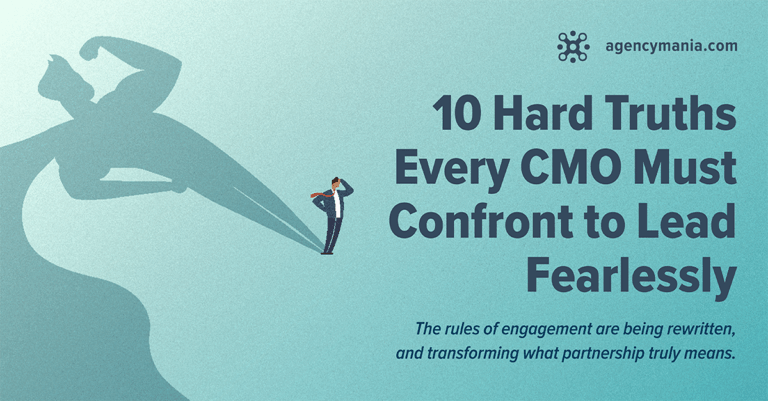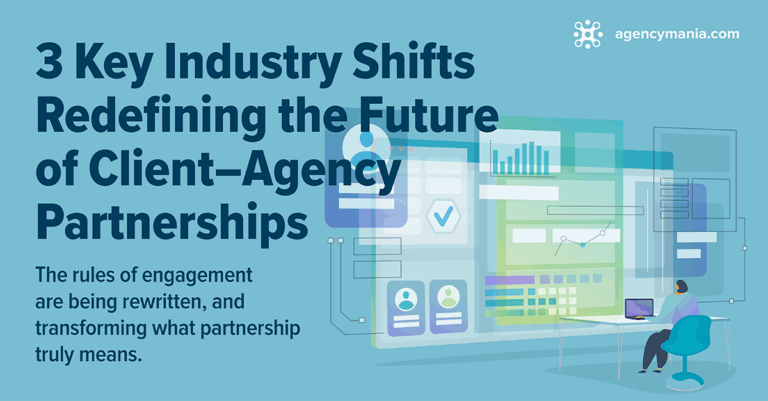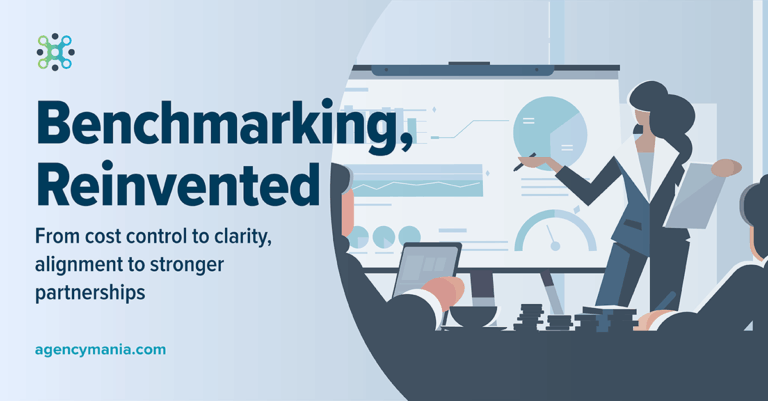Download a print-friendly version here
Sixty percent of the time, it works every time.
“They’ve done studies, you know.
Sixty percent of the ti me, it works every time.”
This is the famous line by Brian Fantana, the anchorman with
a dark mustache and coworker of Ron Burgundy. In the 2004
film “Anchorman: The Legend of Ron Burgundy,” Brian Fantana
(played by actor Paul Rudd), a ladies’ man (or at least trying to
be), shares with Ron Burgundy (Will Ferrell) a fact as to why
his cologne is so effective. Sadly, “Sixty percent of the ti me, it
works every ti me” is a good way of summarizing the outcome
of most client/agency performance evaluations.
Typically conducted annually or semi-annually, these efforts
allow client teams and all their agency partners to uncover
valuable insights about what’s working or not working in the
relationship. They do this by asking the various stakeholders to
provide feedback across a number of carefully selected survey
attributes. Yet, when these teams fail to take action based
on the survey findings, it critically undermines the value of
this important process. Here are six effective ways to ensure
resulting action plans yield the most value in the relationship:
#1: Ensure you are asking the right questions
Client/agency relationships are increasingly more complex
due to the changing nature of advertising and marketing
execution. Clients’ demands and needs from agency
partners have significantly changed in the past couple of
years, and yet these growing expectations are not always
clearly reflected in the way performance evaluations are
conducted. Clients oft en have to balance the benefits of
new, more relevant questions with the desire to maintain a
consistent set of questions to measure progress over ti me,
as well as from survey to survey. However, failing to ask
pointed questions is the quickest way to make the enti re
process suboptimal, results inconclusive and resulting
action plans unusable. For example, a client may look to its
agencies to drive a greater level of innovative thinking or
effective cross-agency collaboration, but may not get deep
enough into each of these critical topic areas to extract
actionable insight. As a result, we oft en work with our
clients to update and refresh questions to ensure they get
input closely aligned to expectations set by senior marketing
leadership and their marketing teams.
#2: Focus your analysis on insights and verbatim
How much insight can you truly get from survey responses and
unstructured data like verbatim until you focus your analysis on
what matters most? The answer is: very little. An aggregated
score says little about its root cause. We’ve seen too many
companies unsuccessfully trying to diagnose performance
issues and ultimately giving up and starting a review of the
account. The most knowledgeable brand advertisers can
significantly improve the quality, effectiveness and efficiencies
of the work their agencies produce on their behalf by steering
the relationship and proactively addressing improvement
opportunities in the partnership. By mining the most predictive
attributes in the relationship and identifying areas that are
most problematic or challenging based on verbatim and
overall sentiments, both clients and agencies are being more
transparent and effective in understanding and therefore
removing these relationship roadblocks.
#3: Look for causality and interdependencies to cure more than symptoms
We’ve discovered over the years that most “actions” take
active collaboration between the client and the agency. It’s
quite rare to find improvement opportunities that do not
require both parties to engage. The symptoms might be
obvious, but to look for a permanent cure is a collaborative
endeavor that requires agencies and clients to acknowledge
whatever role they may have played in getting there in the
first place, and at least understand the causal nature of their
decisions. For example, if the client feels that the agency could
be more on point with its creative concepts, it is likely that the
agency would come back with a verdict (more often justified than not) that if the client briefed it better and provided better
and more consistent guidance, clear metrics and realistic
timelines, the agency would be able to improve its output.
Agencies might be challenged to staff up the business with
amazing (and often proportionally expensive) talent if they
are expected to also reduce resources or drive costs down
in the relationship. The result might be to align on mutual
expectations that are reasonable.
#4: Make performance results easily distributable and digestible
Who wants to stare for hours at a Microsoft Excel table,
Business Intelligence (BI) tool or a tabulated scorecard,
wondering what to do next? Those might look great fully
color-coded, but most individuals are not “data analysts”
and are looking for digested, well-packaged insights with
relevant examples and concrete action plans they can review
and discuss as a team. Time is of the essence, and everyone
realizes that the value is in the outcome, not the process
itself. Over the years, we’ve discovered that both marketers
and agencies are more inclined to get value from a process
that delivers results that are easy to consume and use in the
context of our group discussion and are contrasted against
similar relationships. When teams meet to discuss the results
of their client/agency performance evaluations, they benefit
from having this information organized in a condensed, easy to-
read, synthesized presentation format. The use of a third-party
resource to evaluate results allows both organizations
to leverage external subject matter expertise and perspective
from many other client/agency relationships to tease out great
insight and recommendations.
#5: Get alignment on the most impactful action items and assign ownership
Once alignment has been reached on the root cause of
performance issues, the group — clients and agency teams
— must explore potential action items and who is responsible
for what. However, the list of recommendations can get pretty
extensive, leaving the group having to prioritize which of the
recommendations will be most impactful and easiest/quickest
to implement. A sort of weighting exercise will allow the team
to narrow down the list to a manageable number and get the
best outcome. While on the client side, I’ve seen action plans
that were too generic, unrealistic or without clear ownership.
Those ended up on someone’s desk, next to another pile of
urgent priorities. Clarity of ownership is of utmost importance.
Ownership is always stronger when both parties are actively
engaged and aligned.
There are two types of action items: vertical and horizontal.
The first includes those that are unique to a particular
relationship and must be addressed vertically (within that
particular agency team/client team relationship). For example,
Client Team A and Agency X have identified that strategic
thinking is lacking. They agree on a revised staffing plan better
aligned with client expectations, and the client is committed
to build more ti me for the agency to come up with big ideas.
The second type includes those that are consistent across
multiple relationships and must be addressed horizontally
(across multiple client or agency relationships). For example,
the quality of client briefing surfaces as a universal concern as
voiced by all of the agencies and must be addressed across all
relationships. This particular action item should be handled
centrally within the client organization to avoid duplicative
efforts and ensure greater consistency.
#6: Follow through to ensure continuous improvement
Relationship building is an ongoing process. As such, it requires
a commitment to continuous improvement, monitoring and
fine-tuning. No plan is ever perfect. Both client and agency
teams walk away with their respective action plans (some
of which might be joint action plans) with clear ownership,
specific deliverables and a timeline. It’s important to see
these action plans through by checking on the progress made,
identifying topic areas that might have been postponed or
run into unexpected roadblocks so corrective actions can take
place. It also ensures progress has been made before the next
evaluation is conducted.
Don’t get lost in a sea of operational challenges that take
you away from what really matters: taking concrete steps
to up-level the value of these strategic relationships. Follow
these guidelines to turn your existing performance evaluation
process into a more robust and valuable exercise in which you
can see your partnerships flourish. Here is another oxymoron
that would make Brian Fantana proud: Unless you focus on
the outcome instead of the process, 60 percent of the ti me, it
fails every ti me. However, for most of us (sorry Brian), that’s
not good enough if we are to build strategically driven client/
agency relationships that thrive and produce astonishing work.








